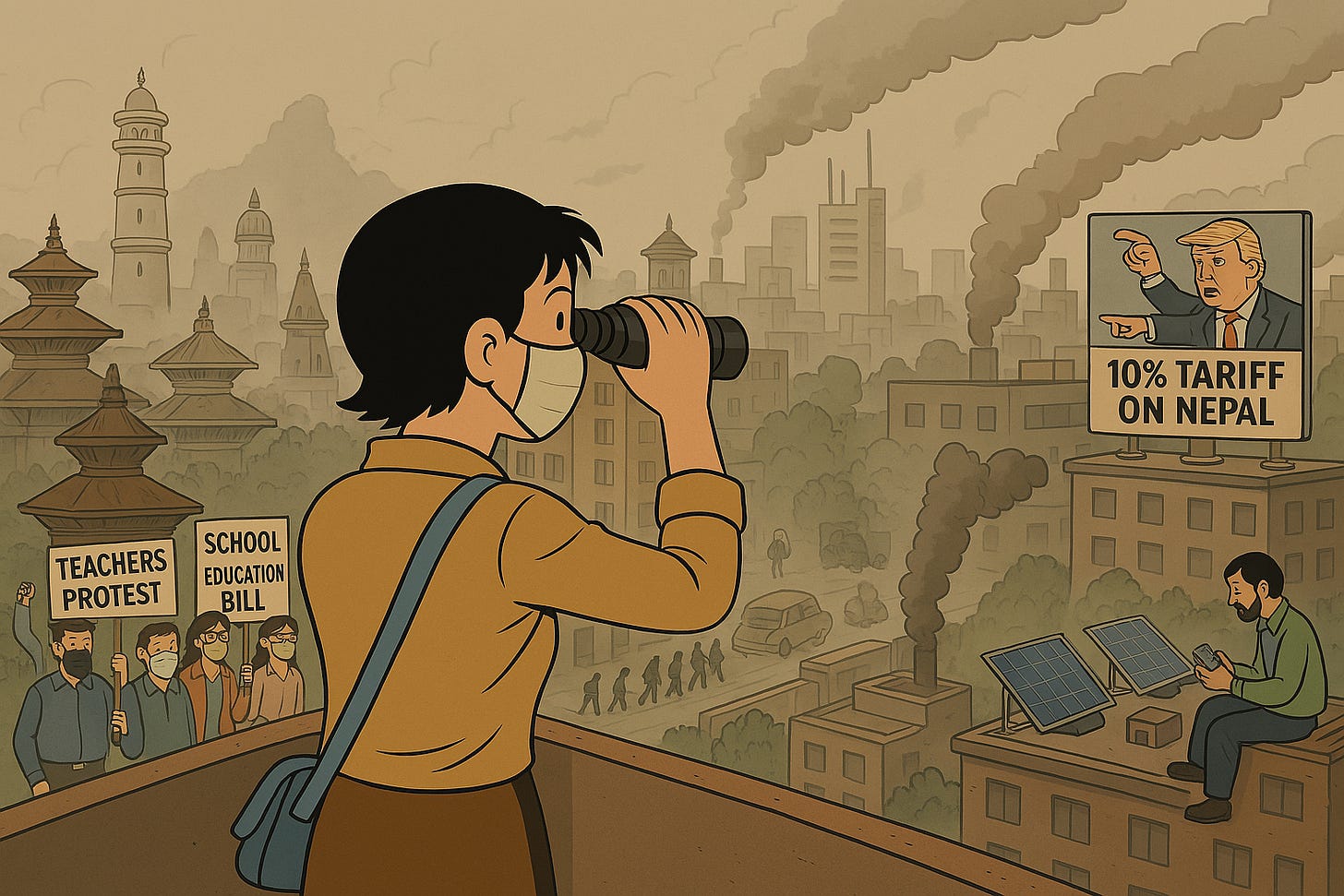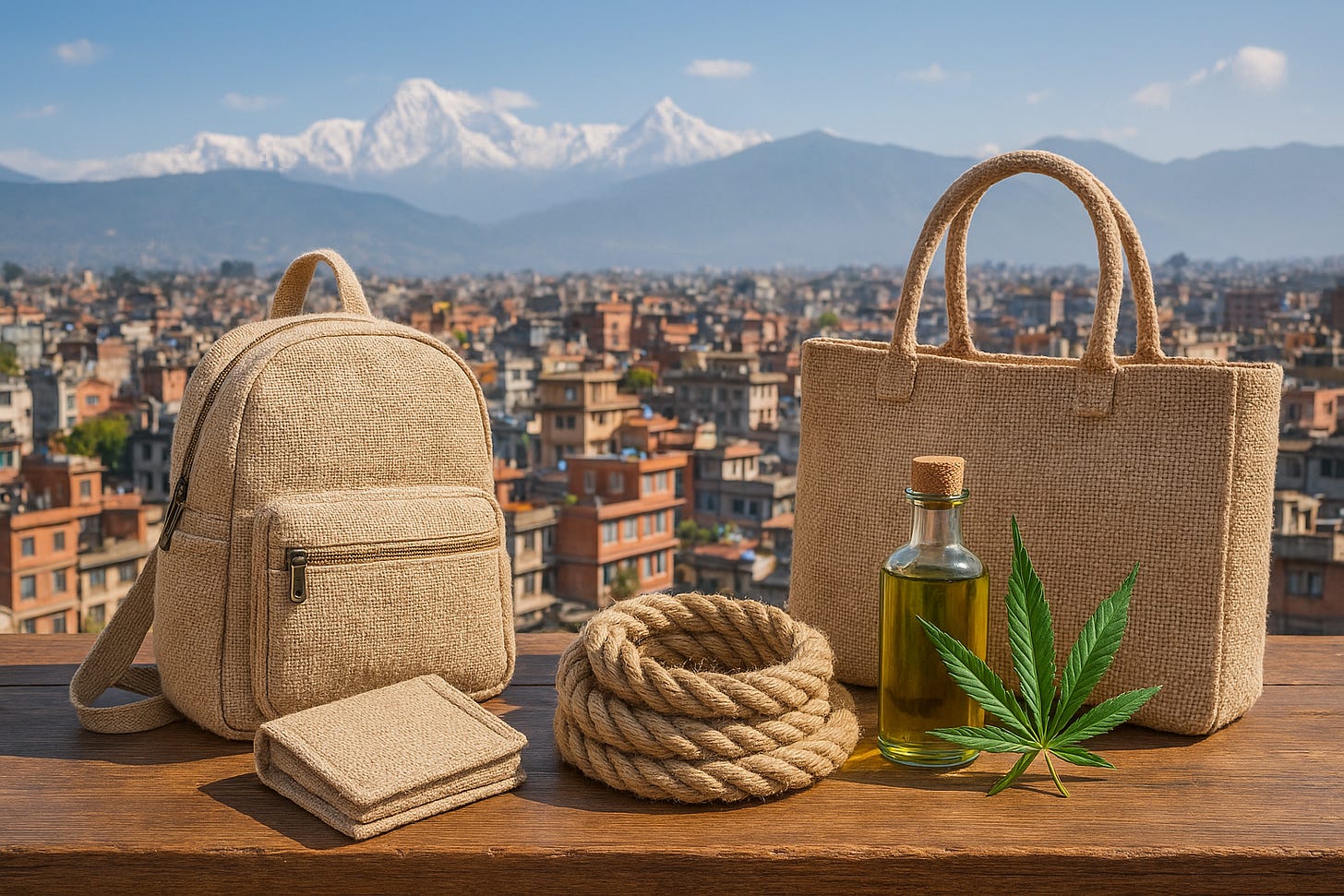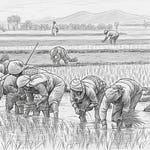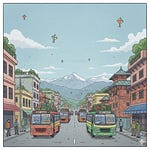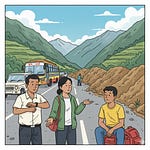Help a brother out. Know someone who cares about Nepal? Pass this along and help grow our circle of sharp, informed insiders. Subscribe for crisp, curated updates you won’t find anywhere else.
From toxic smog to textile tariffs, Nepal’s juggling quite the policy weather report. As Kathmandu chokes on pollution and teachers fill the streets, Trump’s tariff storm might just open a surprise trade umbrella—and hey, hemp is having a quiet moment. Buckle up, we’re going from satellites to yak herders in three scrolls or less.
Economy & Development 💸
Nepal may be a small player in global trade, but the recent tariff shake-up by the Trump administration could create rare opportunities. On Wednesday, President Trump announced a sweeping overhaul, introducing a 10% baseline import duty and hefty reciprocal tariffs of up to 67% on key global exporters. While many countries brace for impact, some Nepali economists see a silver lining. Former Commerce Secretary Purushottam Ojha told Republica that if Nepal quickly attracts investment in its readymade garment sector—which already enjoys duty-free access to the US under the Nepal Trade Preference Program—it could emerge as an unexpected beneficiary. Still, concern lingers over how the new 10% tariff on Nepali products, confirmed by Annapurna Express, might erode those hard-won advantages if Nepal fails to act swiftly through bilateral negotiations.
While the garment industry looks outward, Nepal’s economic resilience at home is showing quiet signs of momentum. The World Bank projects a 4.5% growth rate for FY25—up from 3.9% last year but still below Nepal's development potential—driven by hydropower, trade, and a rebound in agriculture, according to Annapurna Express. The construction sector’s revival is also a hopeful sign, with a 9.1% jump in Q2 after a prolonged slump, as noted by Republica. Meanwhile, India’s decision to boost electricity exports to Nepal by 600 MW has offered temporary relief to industries facing load-shedding of up to 12 hours a day (Republica). And in a move that could reshape rural economies, a new study spotlighted hemp’s untapped potential as a sustainable cash crop that could generate significant income and energy security—if Nepal legalizes its cultivation (KTM Post).
But not all sectors are trending upward. Tourist arrivals dipped 5.1% in March, due to a mix of airport disruptions, rising fares, and political unrest, raising concerns for the hospitality sector as peak season begins (Republica). And in the highlands of eastern Nepal, yak herders are being pushed to the brink as livestock exports to Tibet remain frozen—even though borders have reopened for other goods. With thousands of unsold yaks and chauris and no clear explanation from Chinese authorities, farmers are now questioning the viability of their age-old livelihoods (KTM Post). Amid these contrasts, however, Nepal’s agro-export sector quietly shines—Rs 18 billion worth of goods like cardamom, tea, and ginger were exported via the Kakarbhitta border alone in just eight months, showcasing enduring strength in traditional sectors (Republica).
Social & Cultural ⭐
Kathmandu’s skies have turned from grey to grim. Over the past three months, the capital endured hazardous air quality for 75 out of 90 days, with The Himalayan Times and KTM Post both reporting AQI levels regularly surpassing 350—well into the “hazardous” zone. The toxic mix has been worsened by rampant wildfires, prolonged drought, and crop residue burning, not only damaging forests but also releasing PM2.5 and black carbon particles that linger in the valley’s bowl-shaped geography. Though Republica noted a temporary dip in pollution levels due to strong winds, health experts warn this is a brief reprieve. Hospitals are seeing a surge in respiratory and eye-related illnesses (My Republica), while THT and other health authorities have issued public warnings urging people to stay indoors and wear protective gear. Tragically, wildfires have also turned deadly, with KTM Post reporting multiple fatalities and injuries in eastern and western districts—reminding us that air pollution here is not just a health crisis, but a climate and humanitarian one as well.
Meanwhile, the capital's streets are seeing another kind of pressure—this time from thousands of teachers demanding long-overdue education reform. Educators from across the country have gathered in Kathmandu, calling for the immediate passage of the School Education Bill. Their protest has entered a more confrontational phase, with union leaders refusing to negotiate with acting officials and demanding direct talks with Prime Minister KP Oli, who is currently abroad (Republica, KTM Post). The bill, which has been stalled in Parliament, is at the heart of a broader debate over who should govern public education—local units or the central government. Teachers fear local control could mean unstable employment and political interference. The Ministry of Education has extended an olive branch for dialogue, but with no resolution in sight, this standoff may continue to dominate headlines in the days ahead.
Amid the smog and standoffs, one story offers a breath of fresh air—hemp. A new study covered by KTM Post suggests that industrial hemp could be a game-changer for Nepal’s green economy. With the capacity to generate over 150 million litres of biodiesel annually and meet up to 10% of the nation’s diesel demand, hemp isn’t just an agricultural opportunity—it’s a climate solution. The researchers argue that Nepal’s terrain, labor costs, and climate are well-suited for large-scale hemp production, particularly in hill regions. Beyond energy, hemp can be used for textiles, bioplastics, and sustainable construction materials—offering both rural employment and environmental relief. As policymakers search for long-term solutions to pollution and economic stagnation, this ancient-yet-modern crop might just be the seed worth planting.
Politics & Governance 🪧
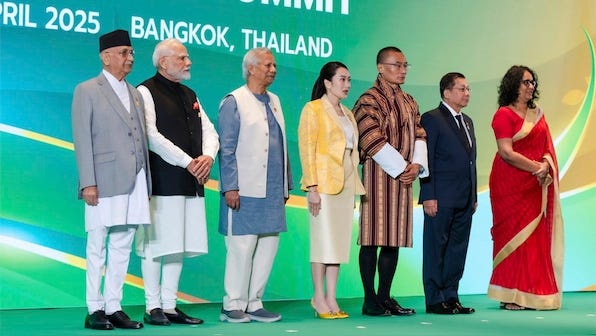
The Sixth BIMSTEC Summit took place in Bangkok this week, with leaders from seven Bay of Bengal nations, including Nepal, adopting the Bangkok Vision 2030—a roadmap aimed at boosting trade, connectivity, and regional resilience. The summit, themed “Prosperous, Resilient, and Open”, also saw the signing of the BIMSTEC Maritime Transport Agreement and commitments toward disaster management and health sector collaboration. According to THT, Thailand’s PM hosted the gathering, which also endorsed a report by the Eminent Persons Group to guide BIMSTEC’s future direction. Prime Minister KP Sharma Oli used the occasion to call for stronger regional partnerships and also engaged in a widely noted bilateral meeting with Indian PM Narendra Modi, their first warm interaction in years. The two leaders reportedly discussed development cooperation, energy, and connectivity, with KTM Post describing the talks as “meaningful and constructive.”
In more turbulent domestic political news, Rabi Lamichhane, president of the Rastriya Swatantra Party and former Home Minister, was arrested on Friday in connection with a high-profile cooperative fraud case. Acting on a Tulsipur High Court order that overturned his previous release on bail, police detained Lamichhane from his residence in Kathmandu. The charges relate to the alleged embezzlement of over Rs 100 million through the now-defunct Gorkha Media Network. According to Republica, the court ruled that the seriousness of the allegations warranted custodial investigation. Lamichhane has maintained his innocence and pledged to fight what he described as an injustice while urging supporters not to disrupt party activities.
Meanwhile, Kulman Ghising, the former Managing Director of the Nepal Electricity Authority, publicly criticized the government for his dismissal, suggesting it was politically motivated. Widely celebrated for ending Nepal’s years-long electricity load-shedding crisis, Ghising claimed at a press conference that he was removed because of his push to collect unpaid dues from powerful industrialists. He implied that Prime Minister Oli and Energy Minister Deepak Khadka used state mechanisms against him. As reported by Onlinekhabar, Ghising expressed disappointment but reaffirmed his commitment to serve the nation as a responsible citizen, declaring, “I have only left the NEA, not my responsibilities.”
Did you know ❓
🚀 Did you know Nepal launched its first satellite into space in 2019? Called NepaliSat-1 (or Bird NPL), it was a 1.3 kg CubeSat developed by two Nepali engineers studying in Japan and launched aboard a U.S. rocket as part of the BIRDS-3 project. It reached the International Space Station in April 2019 and was later deployed into low Earth orbit, circling the planet every 90 minutes at an altitude of around 400 km. According to The Himalayan Times and Onlinekhabar, it captured geographic data and images of Nepal and remained operational for about a year—marking Nepal’s formal entry into the space era.
Diaspora & Globalization 🌎
Nepal and Thailand have agreed to form a Joint Business Council to strengthen trade and investment ties, with a focus on tourism, energy, and agriculture. During talks in Bangkok, FNCCI highlighted Nepal’s improved investment climate and called for on-arrival visas for Nepali entrepreneurs. The move follows similar initiatives with Qatar and supports Nepal’s broader push for deeper regional economic integration, according to THT and Republica.
Let’s connect
Enjoying this issue? 📩 Share it with a friend & let’s keep Nepalis worldwide in the loop! Got thoughts? Hit reply—we’re all ears! Or let us know what you think via our Feedback form or follow us on Facebook | LinkedIn
P.S. Got a story or issue you'd like us to cover next week? Drop us a reply — we're building this space together.
About Nepali Diaspora Digest:
The Nepali Diaspora Digest connects the global Nepali community with curated news, insights, and stories that matter most. Join us as we celebrate and explore the diverse voices and achievements of Nepalis worldwide.
Partner shout out
belayat.uk: helping Nepalis connect in the UK on jobs, housing, events and finding local Nepali owned businesses




